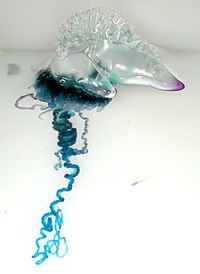
Photo from wikipedia
Background and Objectives: Proximal humerus fractures (PHFs) are common in the elderly, but the treatment results are often poor. A clear understanding of fracture morphology and distribution of cortical bone… Click to show full abstract
Background and Objectives: Proximal humerus fractures (PHFs) are common in the elderly, but the treatment results are often poor. A clear understanding of fracture morphology and distribution of cortical bone loss is important for improved surgical decision making, operative considerations, and new implant designs. The aim of this study was to develop a 3D segmentation fracture mapping technique to create a statistical description of the spatial pattern and cortical bone loss of complex PHFs. Materials and Methods: Fifty clinical computed tomography (CT) scans of complex PHFs and their contralateral intact shoulders were collected. In-house software was developed for semi-automated segmentation and fracture line detection and was combined with manual fracture reduction to the contralateral template in a commercial software. A statistical mean model of these cases was built and used to describe probability maps of the fracture lines and cortical fragments. Results: The fracture lines predominantly passed through the surgical neck and between the tuberosities and tendon insertions. The superior aspects of the tuberosities were constant fragments where comminution was less likely. Some fracture lines passed through the bicipital sulcus, but predominantly at its edges and curving around the tuberosities proximally and distally. Conclusions: A comprehensive and systematic approach was developed for processing clinical CT images of complex fractures into fracture morphology and fragment probability maps and applied on PHFs. This information creates an important basis for better understanding of fracture morphology that could be utilized in future studies for surgical training and implant design.
Journal Title: Medicina
Year Published: 2023
Link to full text (if available)
Share on Social Media: Sign Up to like & get
recommendations!